Two Imaginative Books about a Single Place over Time
Christians have a different perspective on time, which gives deeper meaning to these fun reads
One of my children’s most loved books right now is called A Street Though Time illustrated by Steve Noon. I find it lying all over the house because one of the two older boys (ages 5 and 7) is constantly grabbing it and staring intently at a page here and there. And I must admit, it is pretty captivating.
Beginning in the Stone Age, it illustrates the history of a single street across a 12,000-year period. It’s a great concept, and it offers so much for discussion, even when we only “read” one page of it.
Disclaimer for A Street Through Time: as a book from a secular publisher (DK), there are “woke” elements—fortunately, they fall on the final pages of the book, the “present day” and “future city,” which my children find so terribly uninteresting that I never catch them looking at them. It would also be easy to rip those ones out.
A Street Though Time depicts, with intricate detail, the story of the people who make their home along a river, stretching from the first farmers to the Iron age, Roman Times, the Barbarian invasions, Viking Raiders, Medieval times, the counter-reformation (which the book, predictably cannot describe as more than “Under Attack!” but I know that you, dear reader, can fill in the blanks), the Enlightenment, the Industrial Revolution, and the birth of modern times.
I think that what is most captivating about this book is that it shows real life, in all of its mundane and interesting facets, in times of war and times of peace, in sickness and in health, and in high civilization and modern dystopia. We see women spinning, weaving, and sewing. Men hunt and smith. Children play. The division of labor along gender lines is a given, but this is something interesting to children who might not be used to seeing such a division (not your children, of course!). The excitement of having to hunt, fish, trap, build fires, build homes, fight off invaders, and develop civilization is, truly, gripping for children!
Right now my children loooove to imagine that they’re out in “the wild” and trying to survive on their own skills—which invariably involves fire (pretend!).
Religious ceremonies are illustrated—old pagan ones and even a medieval Catholic procession! We see life and we see death on these pages.
The author does not shy away from the sometimes gruesome reality of life. The page depicting the plague is a fan favorite here. They strain their eyes to make out the suffering and terror on these pages, squinting to see the dead body floating on the river. The details of the Viking raid are, shall we say, honest.
The book, while preferring to use the academese “BCE” and “CE” instead of BC and AD (to which I say, what, pray tell, marks the birth of the “common era”?), is nonetheless honest at crucial points. For example, it explains of the Viking era: “The barbarians have now settled for hundreds of years. They have become Christians and have grown prosperous.” The authors might not see the connection, but this is one that you can elucidate for your kids. “Yes kids, the barbarians lost their barbarism at precisely the time that they adopted Christianity. You can see its civilizing influence everywhere—see the stone church and thriving town? That is due to these people adopting ‘love neighbor’ over pillage and ransack.”
And the influence of Christianity only continues to bring the little town to new heights. You can watch the growth during the Middle Ages of the church and castle as the town’s architecture similarly becomes more advanced and more beautiful.
We like to talk about our favorite parts of each page and then my oldest loves to play a game where he picks two different time periods and asks me which I’d rather live in. (I am tempted to choose the Stone Age when it’s between that and “the street of the future,” but given that the people in the future have the benefit of Christ, I have to choose dystopia and assume that there’s an underground crypt somewhere where you and I will share our rations and meet for Liturgy!)
We also just recently read another book that is along this same line. It is called As An Oak Tree Grows by G. Brian Karas. In this book, we get to watch the 200+ year growth of a town behind the increasingly sprawling branches of an oak tree. The seasons change for the oak and for the town, which grows from a single hut in 1775 when the tree is a mere sprout to the year 2000 when the tree meets its end. Each page represents a 25-year period. We love to look closely at the pictures and see what has changed. I mention historical moments such as the Declaration of Independence, the U.S. Civil War, and the birth of grandparents as reference points for the kids.
In this book, you get to really see the organic development of an American city. There is something very moving about its growth alongside that of the oak tree. We can see the beauty of the natural world alongside the historical experience of man. It needn’t be put in words, either. There are some ineffable truths in the pages of this seemingly simple book.
As Christians, we take a different view of time than does the secular world. These two books give us a small way of experiencing that broad perspective of time that only our Lord truly appreciates. On the pages of these books are life and death (there is a little cemetery outside of a church that grows on the pages of As An Oak Tree Grows), growth and decay, the beginnings and ends of eras. Always there is a church.
Recently, we renovated our kitchen due to damage from a major leak, and we left one corner of it unfinished for way too long while we pondered how my husband would finally build the little bench that was going in. Finally, when the newborn was one, we decided it was time. In his infinite wisdom (matched by his craftsmanship), he knew that more kitchen storage space would equal general happiness, and so he made the seats of the bench lift up. But in the back corner was a little hole of dead space, just big enough for a family time capsule. So he and the kids put in a letter and some trinkets and sealed it all up—either for us to open in 30 years or for another owner, sometime way down the road to discover. It was especially fun to do because our house is about 100-years old and the kids sometimes dig up rusty old things and we imagine how old they are.
I myself like to think about who once lived here and what life was like for them. The house was smaller (there were a couple of additions made over the decades), but the families also used to be larger. When we renovated the kitchen I approached the project with some trepidation. There is nothing worse than an old farm home being renovated by the dreaded flippers, who rip out original wood floors and replace them with laminate and then put in a “modern” gray kitchen and bathrooms to match.
The Burkean idea that we are all a part of an unwritten “social contract” that is between the living, the dead, and the yet-to-be-born can influence even how we build or renovate a home. It is easier to understand the significance of Christian stewardship of the land and of our material possessions when we can imagine this organic continuity. These books, I would say, are great tools for that!
And just for fun, here are some shot from the end of the world A Street Through Time.
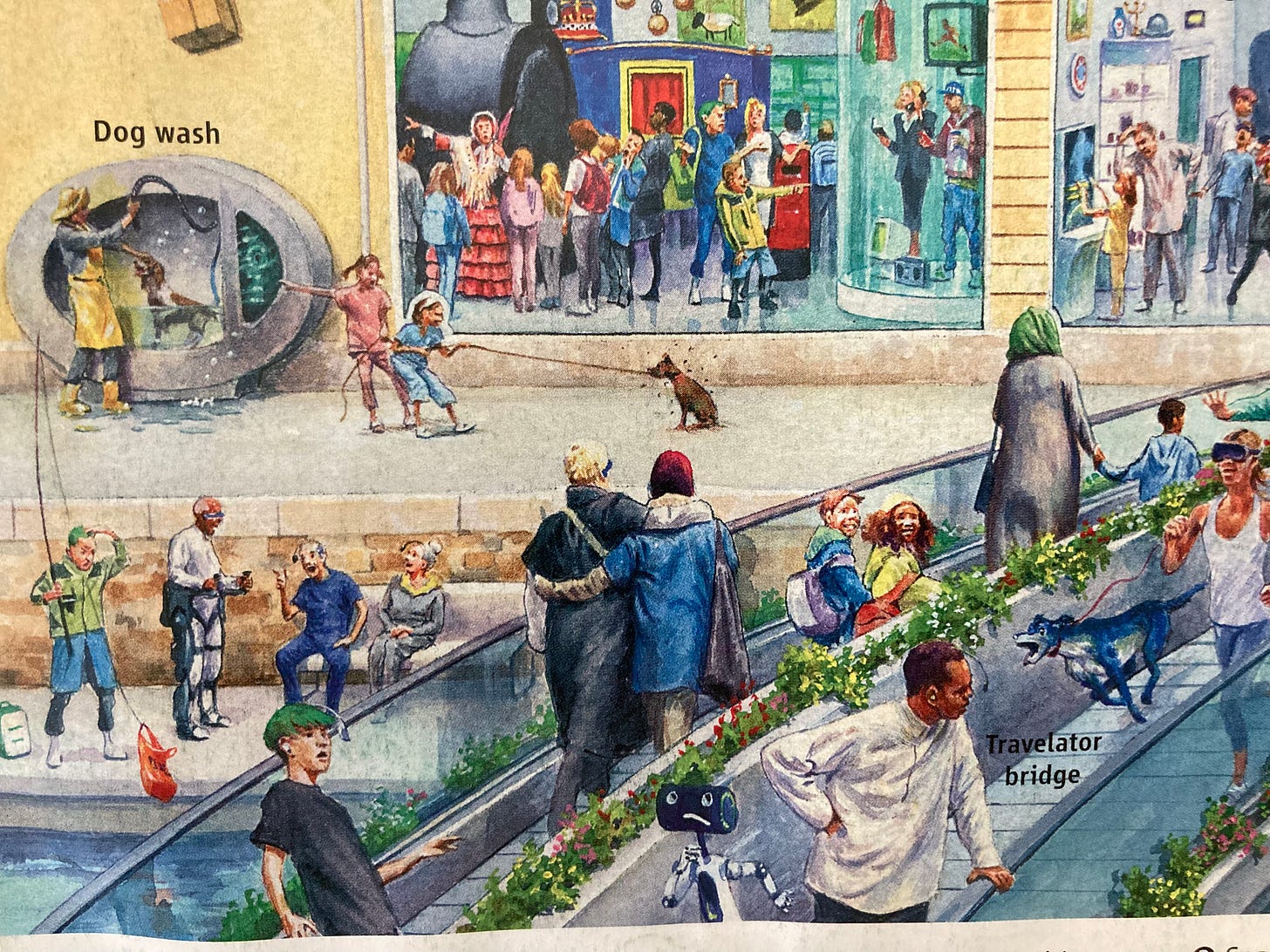
But don’t let that deter you from an otherwise great book!
Share your thoughts in the comments!


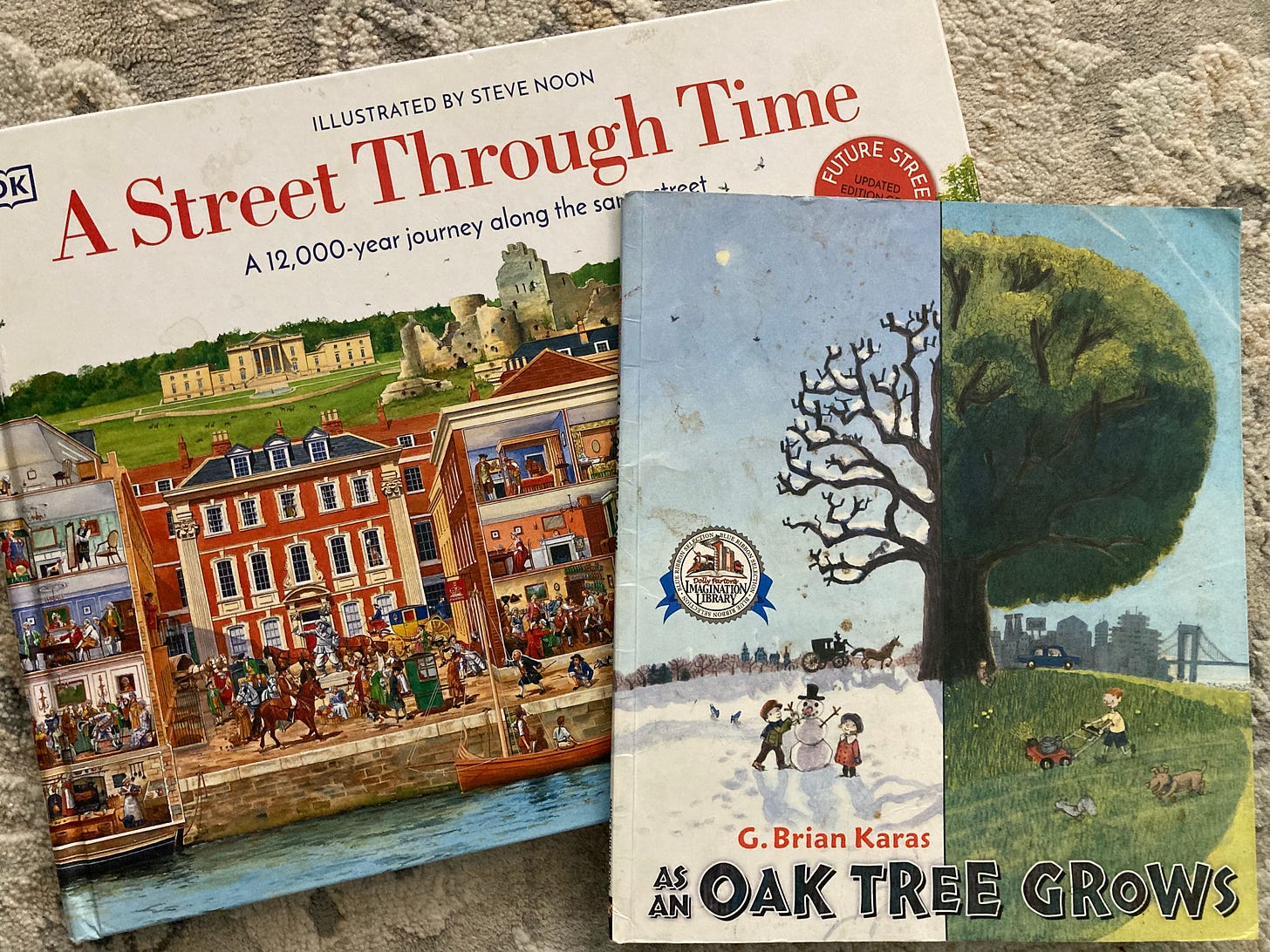
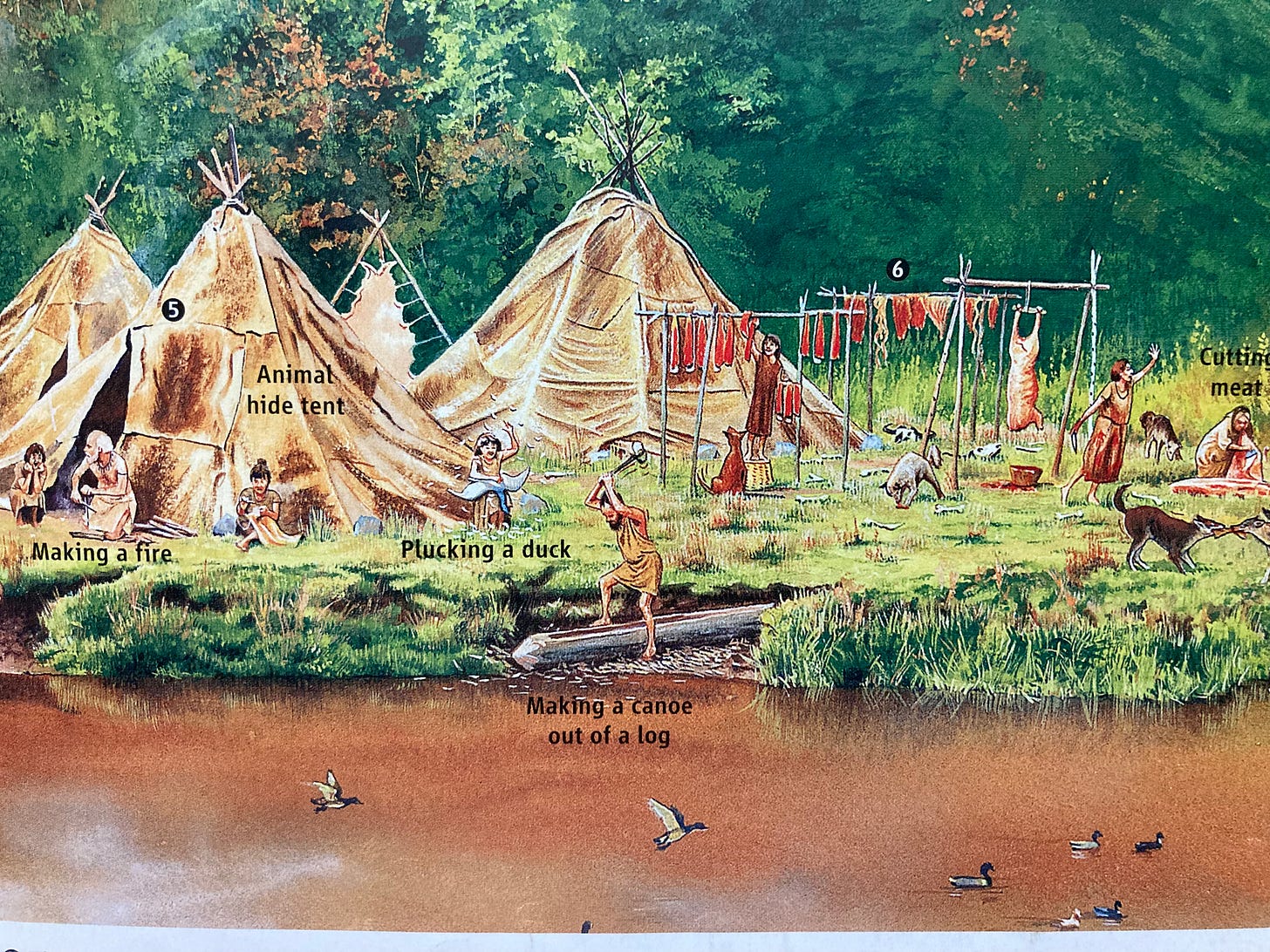
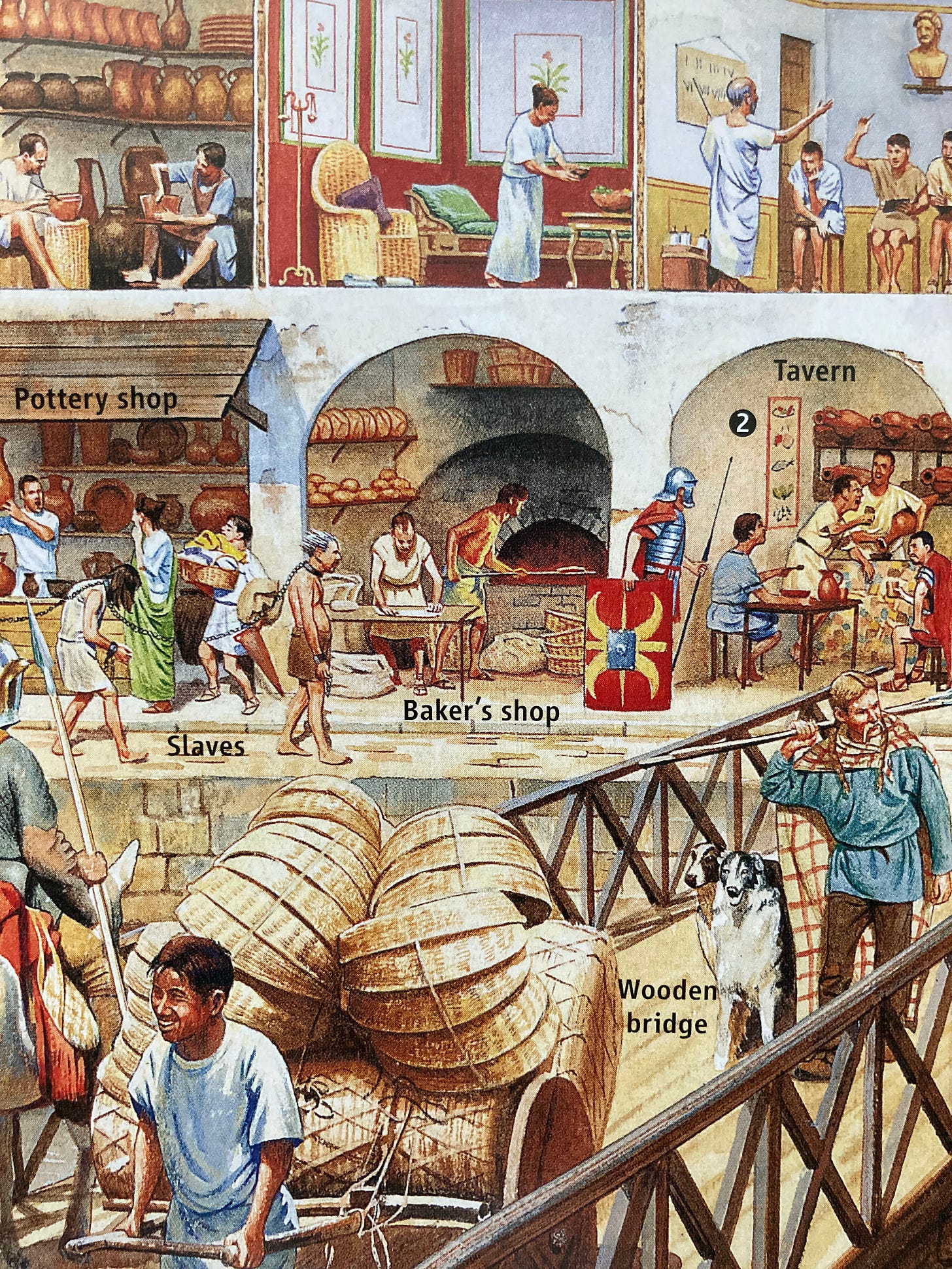
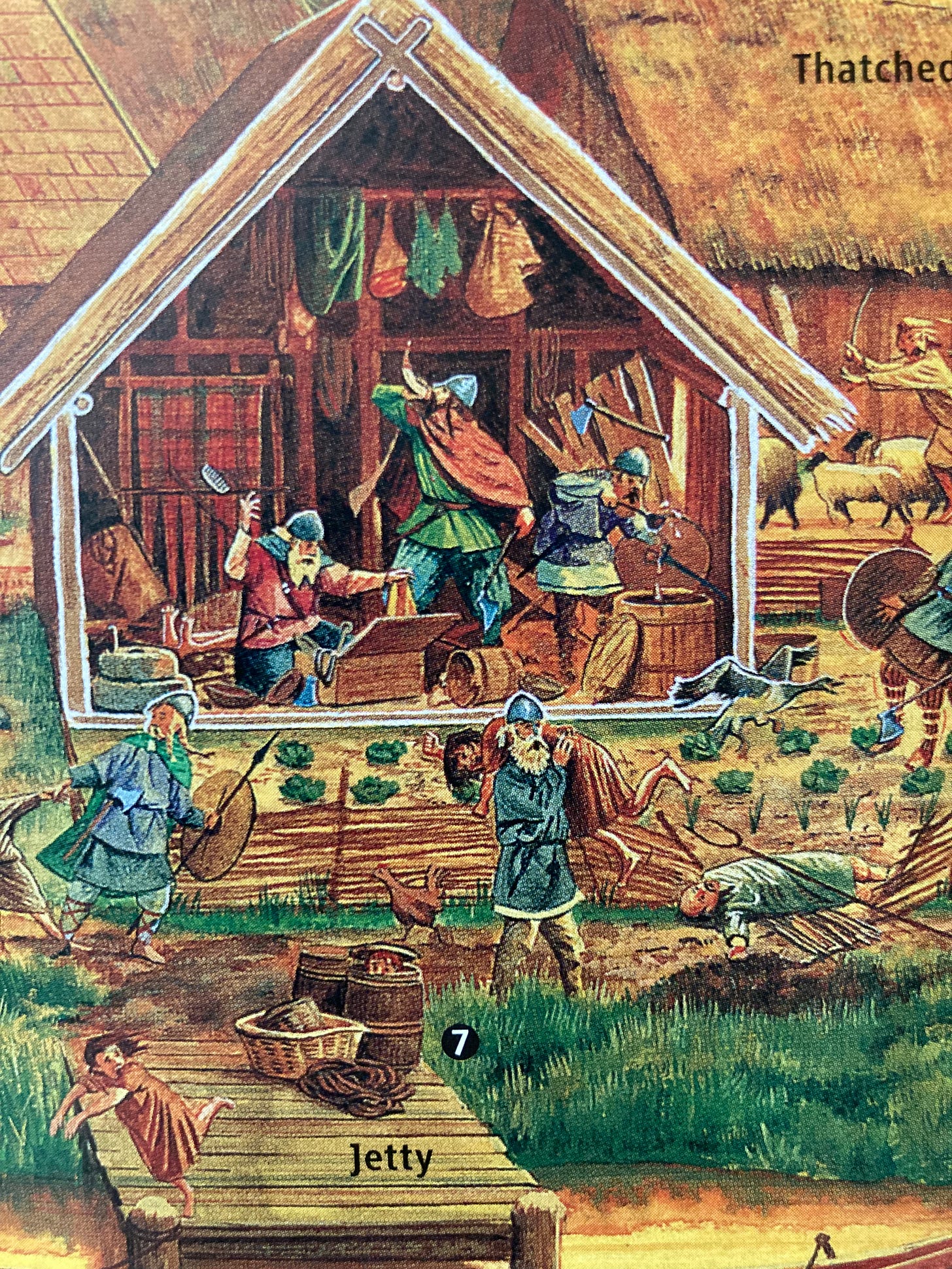
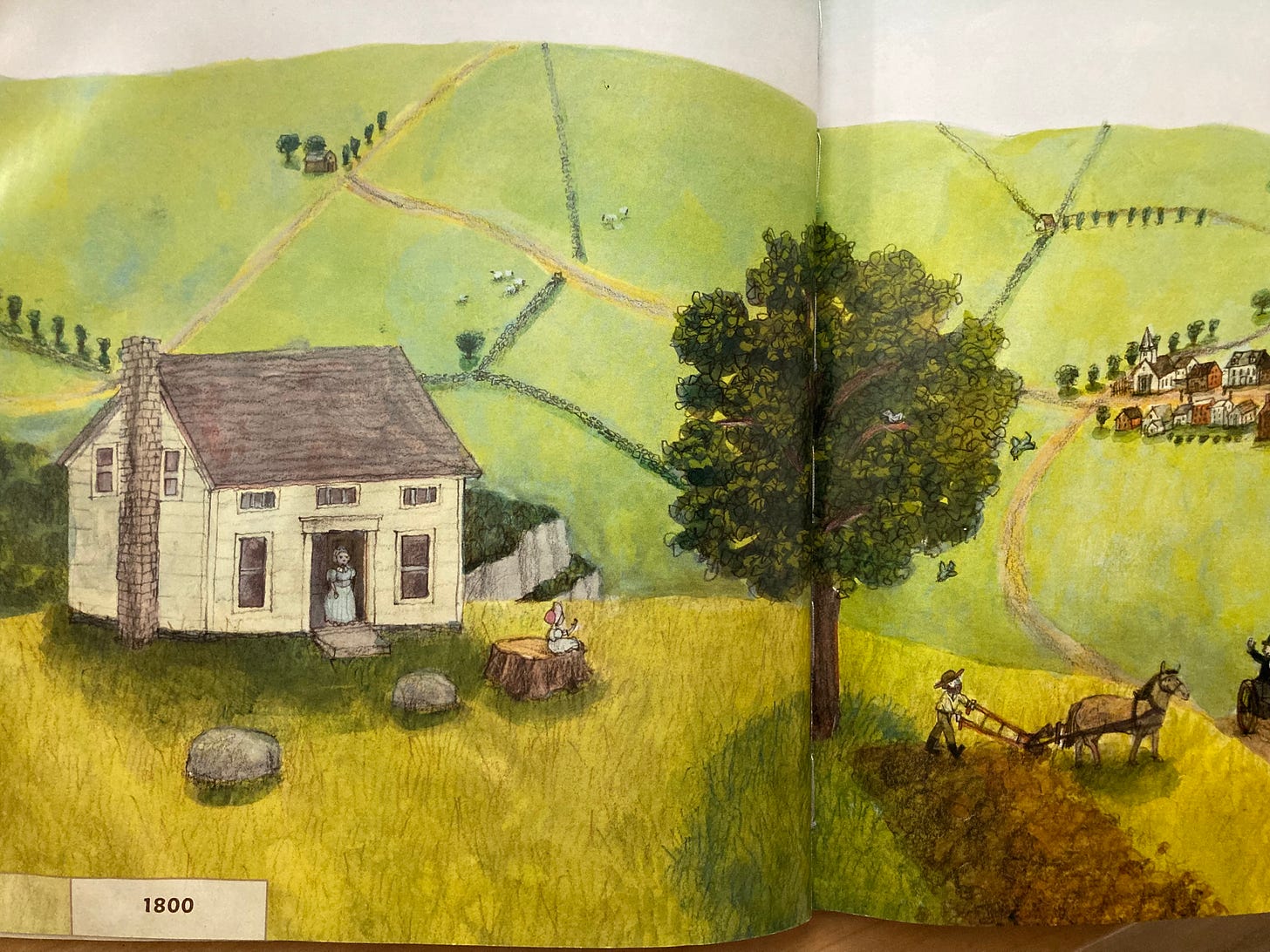

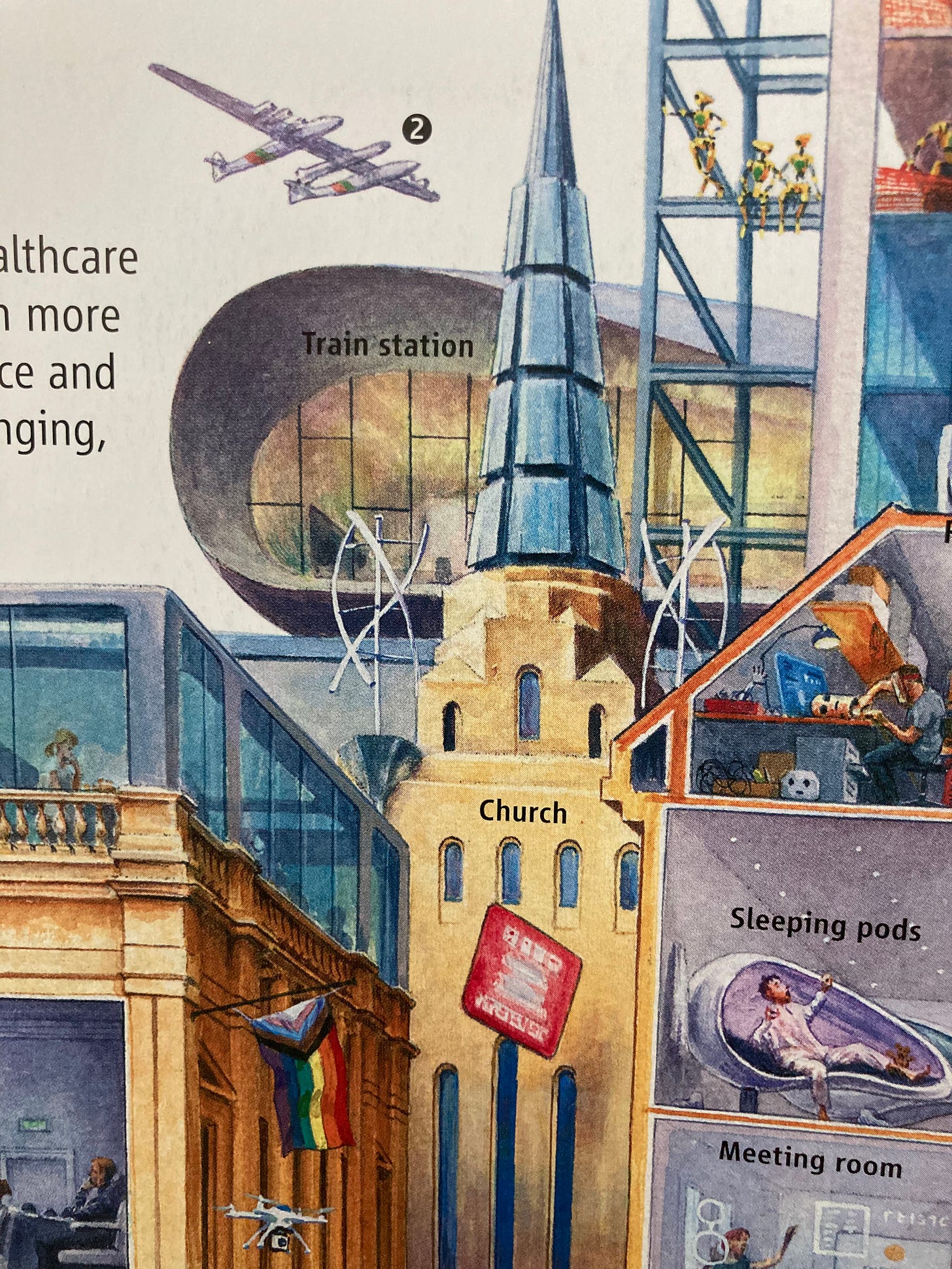
In the same genre is the lovely “The Little House” by Virginia Lee Burton. That one has a little more social critique.
The “future” pages in these kinds of books really give away the plot. The aspirational images where the church is completely crowded out by the city around and technology above literally blanketing the spire. Seemingly a purposeful campaign to destroy one of the cardinal virtues: hope. But we must not give in, God’s time is not a linear decline nor an inevitable spiral into the abyss. As a wise professor used to say, you never know when counter currents are stirring. A major revival could be on the horizon.
There is an older, unblemished version of A Street Through Time! You can still find it if you look around.